Nutcrackers, Chisels — and Air Conditioners?! The Diverse World of Bird Beaks
What is a bird beak? Is it just a funny-looking version of a nose, or is it something else entirely?

Birds use their beaks for a wide variety of functions, including communication and defense, as well as eating. These amazing appendages might seem simple, but they hold plenty of surprises. If you want to learn more (or maybe feel a little nosy), join us for a dive into the world of bird beaks below.
A Quick History of Bird Beaks
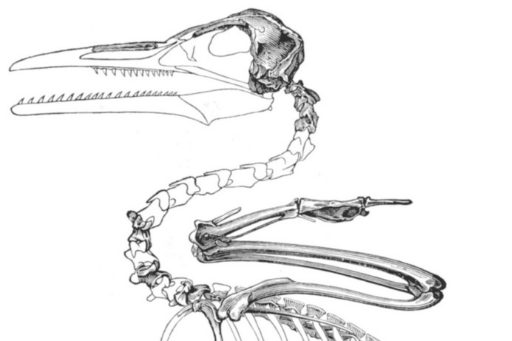
Birds' beaks evolved gradually from the toothed snouts of their dinosaur ancestors. Some hints about how exactly that happened come from a gull-like bird that lived in Kansas around 70 to 90 million years ago. Ichthyornis dispar had a muscular, toothed jaw tipped with a pincer-like beak that it probably used to grasp morsels of food. Maybe, scientists theorize, that beak helped replace the grasping forelimbs of this prehistoric bird's ancestors, which had been co-opted for wings when flight developed.
The Biology of Beaks
Bird beaks are made mostly of bone — they're just a specialized modification of the upper and lower jaw bones shared by almost all vertebrates. The outside of a bird's beak, however, is covered not in skin, but in a thin, shiny sheath of keratin, the same protein that makes up your hair and fingernails.
The bony structure means a bird beak is very different from a human nose, which is just a cartilaginous bump on the front of your face. Birds do have nostrils (or “nares”), which are usually located near the top of the beak, where it meets the face.
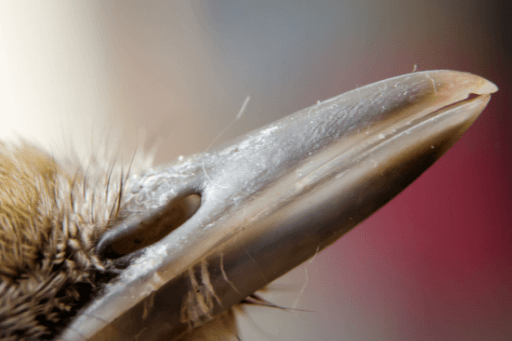
Chips and cracks in a beak's outer keratin layer can heal over time, but if the underlying bone is damaged, that spells trouble; a bird can't regrow a broken beak any more than you could regrow a broken-off tooth. The keratin layer does grow slowly, very much like your fingernails, but is worn down through use, to keep it the right shape and size. Birds deprived of their normal food and behaviors, as are some captive birds, might have the keratin sheath grow abnormally. As a result, their bills might need trimming.
Incidentally, if you're wondering about the difference between “beak” and “bill,” there isn't one. At some point in the past, the word “beak” was used mostly to refer to the hooked bills of birds of prey, but now the two words are more or less synonymous.
All birds have beaks (and so do a few other animals, too, such as turtles). But those beaks aren't all the same — over millions of years of evolution, bird beaks have been honed to carry out all kinds of tasks, depending on the needs of each species.
Bird Beaks of All Shapes and Sizes
With around 10,000 bird species in the world, the variety of specialized beaks in nature could fill an entire book or set of books. Here are just a few — from beak adaptations you can spot at your backyard feeder, to extreme examples found deep in tropical rainforests.
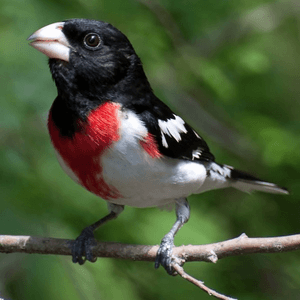
Beaks for Cracking Seeds
Scientists can tell the size of seeds typically eaten by specific bird species by measuring the average size of the birds' bills. Some species, like the fiery-red Black-bellied Seedcracker of Central Africa, are even split into big-beaked birds that specialize in large, hard seeds and small-beaked birds that specialize in smaller, soft seeds.
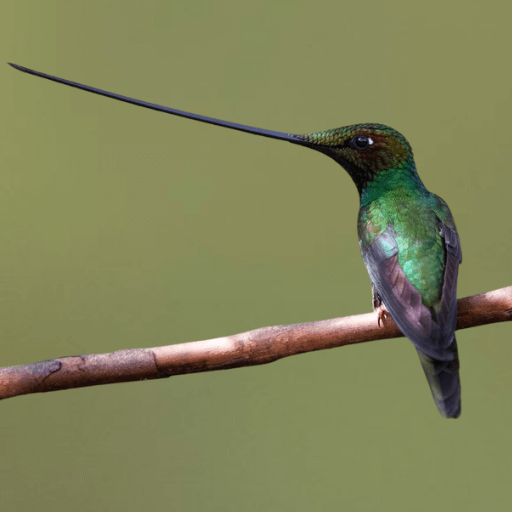
Beaks for Sipping Nectar
Hummingbirds' long, delicate beaks allow them to reach deep into flowers to drink their sweet nectar, which they lap up by flicking their tongues in and out like piston pumps. The longest bird beak in the world, relative to body size, belongs to a hummingbird: The Sword-billed Hummingbird's beak measures over four inches long — and the rest of the bird is only five inches long, including the tail!
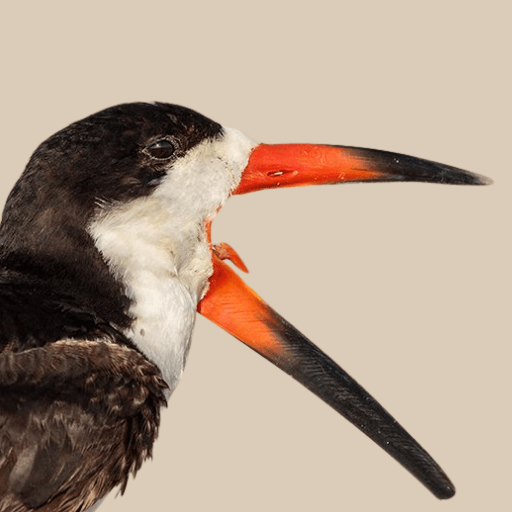
Beaks for Snapping Up Fish
The Black Skimmer, a relative of terns, gets its name from its habit of flying low over the water with its beak open, holding the tip of its lower mandible beneath the surface of the water. When the submerged beak tip brushes against a fish, the skimmer snaps its bill shut and is rewarded with a meal. To facilitate this feeding strategy, skimmers have long, narrow beaks that are longer on the bottom than on the top, giving them a quirky “underbite.”

Beaks for Chiseling Wood
Woodpeckers' chisel-like beaks are paired with unique cranial anatomy, including plates of spongy, shock-absorbing bone in their skulls. These special features let them use their heads to hammer holes in trees without suffering any ill effects. Woodpeckers' self-sharpening beaks help absorb and divert the shock of each impact, letting these birds withstand forces many times greater than what would cause a human concussion.
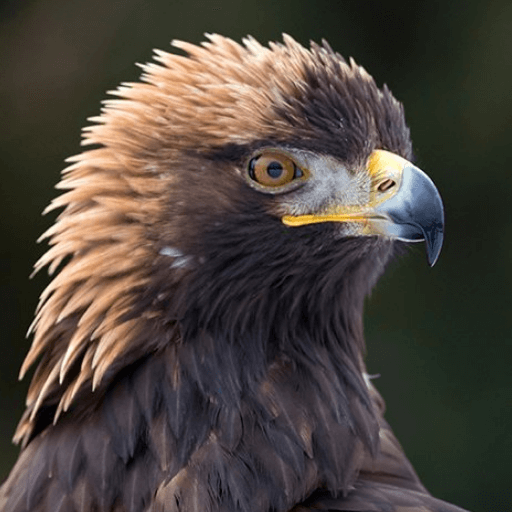
Beaks for Tearing Meat
Perhaps the most fearsome beaks in the bird world belong to birds of prey — including eagles, hawks, and falcons — which catch and eat animals including other birds and mammals. They use their sharp, hooked beaks to tear into the flesh of their prey, ripping off morsels to eat. In 2008, a Bald Eagle named Beauty became the first bird to receive a 3D-printed prosthetic beak after her upper beak was shot off by a hunter.

Beaks for Air Conditioning
South America's Toco Toucan, owner of the most massive beak relative to body size, uses its giant schnoz for an unusual purpose: to keep cool. By increasing the blood flow into its beak, a toucan can radiate more heat back into the air around it, which is useful for keeping its body temperature down in the hot, humid forests it inhabits.
Birds in Trouble
Despite the impressive ways birds have adapted to succeed in various habitats, they face mounting challenges. In less than a single human lifetime, 2.9 billion breeding adult birds have been lost from the United States and Canada, across every ecosystem. This includes familiar birds: The Dark-eyed Junco has lost an incredible 175 million individuals from its population. The White-throated Sparrow has lost 93 million.
Scientists have identified habitat loss as the biggest overall driver of bird declines. Habitat degradation is a second cause of losses. In this case, habitat doesn't disappear outright but becomes less able to support birds, such as when habitat is fragmented or altered by invasive plants, or when water quality is compromised.
Aside from habitat loss and degradation, other major human-caused threats to birds come from cats and other invasive species; collisions with glass and industrial infrastructure such as communications towers and wind turbines; and exposure to pesticides and other toxics.
Climate change exacerbates these threats, and also creates new challenges, for example, by changing habitat distributions and shifting the timing of peak food supplies for birds.
How You Can Help Birds
We all can do our part to protect birds.
American Bird Conservancy and our Joint Venture partners have improved conservation management on 6.4 million acres of U.S. bird habitat — an area larger than the state of Maryland — over the last ten years. This is a monumental undertaking, requiring the support of many, and you can help by making a gift today.
Policies enacted by Congress and federal agencies, such as the U.S. Fish and Wildlife Service, have a huge impact on America's birds. You can help shape these rules for the better by telling lawmakers to prioritize birds, bird habitat, and bird-friendly measures. To get started, visit ABC's Action Center.
Finally, don't overlook the impact you can have at home. Living a bird-friendly life can have an immediate impact on the birds around you. Doing so can be as easy as adding native plants to your garden, avoiding pesticides, and keeping cats indoors. To learn more, visit our Bird-Friendly Life page.
 | Rebecca Heisman is a science writer based in eastern Washington. Her first book, which tells the scientific backstory of how we know what we know about bird migration, will be out in spring 2022. |


















































